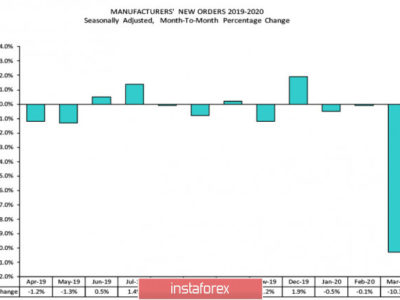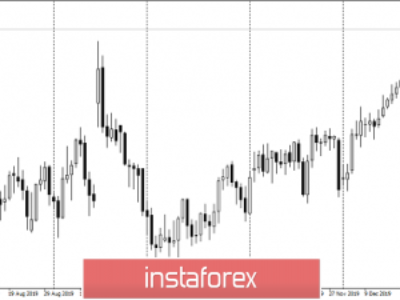The Forex Weekly Outlook Aug 10th – 14th
Let’s first get some context around the week ahead with a short review of the main movers from last week.
Last Week: AUD strongest; GBP weakest; USD mixed

AUD benefited from a less dovish than expected Reserve Bank of Australia (RBA); specifically, the Australian central bank dropped the “further depreciation likely and necessary” from its monetary policy statement last Tuesday.
GBP was hurt by a less hawkish than expected Bank of England (BOE); specifically, the UK monetary policy statement minutes revealed that only one of nine Monetary Policy Committee (MPC) members voted for an interest rate increase (two or more were expected to vote for an interest rate increase).
Major Pairs – One Hour Charts – Last Week

Also, the UK Inflation report was less hawkish than expected (the Inflation forecast was expected to be increased but it remained virtually unchanged).
Lastly, BOE Governor Carney was less hawkish than expected; specifically, he said possible future interest rate increases would be data dependent (this was less hawkish than his recent comments).
USD see-sawed back and forth during the week with the good and bad US economic news and the good and bad news from the other currencies.
Friday’s highly anticipated US employment report was very close to expectations. The USD initially increased following the report, likely based on trader’s sentiment that a September US interest rate hike would still be likely provided the US employment report did not disappoint, which it did not; the USD rally did not last long; the gains evaporated within 2 hours of the US employment release.
Major Pair 30 Min Charts Friday August 7th 13:30BST to 15:30BST

There are two major Tier 1 news events we need to take a closer look this week: UK Unemployment and Us Retail Sales.

UK Unemployment
This Wednesday’s UK employment report has three elements:
- Claimant count (net change in the number of people claiming unemployment benefits)
- Unemployment rate (percentage of people who want to work that are unemployed)
- Average earnings (percentage change for the last 3 months versus the same 3 months a year ago)
Last Thursday (Super Thursday) BOE Governor Carney indicated that the timing of future UK interest rate hikes would be “data dependent”. Traders likely interpret “data dependent” to mean the strength or weakness of the economy (employment a key part) and inflation (average earnings is a key gauge of inflation).
Based upon Governor Carney’s most recent guidance – data dependency – all three parts of the UK employment report will be closely scrutinized for clues of when the first UK interest rate hike will be.
Clearly, a “bullish” UK employment report (all 3 parts considered concurrently) would be GBP “bullish”. And a “bearish” UK employment report (all 3 parts considered concurrently) would be GBP “bearish”.
Given “Super Thursday’s” overall dovish tone, a bearish UK employment report would likely have a sustained negative impact on the GBP. And a bullish employment report will likely have only a temporary positive impact on the Pound.
US Retail Sales (Ex-Auto)
Thursday’s US retail sales ex-auto is the next important clue of when the US Central bank (the Fed) will start raising interest rates.
Given last Friday’s as expected US employment report, if the number is as expected or better, traders will assume the possible September interest rate hike liftoff is still in play and the USD is likely to initially trade higher following the release.
If the number is less than expected, traders will cut back their September interest rate hike liftoff expectations and the dollar is likely to initially trade lower following the release.
A significantly worse than expected number (a negative number versus 0.4 expected) would likely have a sustainable negative impact on the USD.
Directional Currency Views
- The GBP is vulnerable following the less hawkish than expected “Super Thursday”. Friday’s poor showing points to further possible weakness in the pipeline. The UK employment report is the wildcard this coming week; it will also be a key pivotal directional indicator (see UK employment report discussion above).
- The AUD has potential for further gains following the less dovish than expected RBA last week.
- The JPY should continue to trade opposite the stock indices. The prior Friday’s dovish Bank of Japan (BOJ – Central bank) comments makes JPY sell trades a preference; to be clear – USDJPY buy trades, when stocks are increasing, are preferred. But stocks looks lower so USDJPY likely lower as well.
- The CAD should follow the oil this coming week. However, last week oil dropped $3 and the USDCAD was only marginally higher.
- The NZD, like the AUD, recently dropped the “currency should weaken further” language from its monetary policy statement (bullish). However, milk prices continue to decline, limiting the NZD’s appreciation potential. Overall, more bullish than bearish this coming week.
- The USD’s muted, mixed performance last week indicates possible further weakness ahead:
- USD still a strong currency overall, based upon the last 20 days price action.
- A somewhat weak currency overall, based upon the last 5 days price action.
- The later part of last week and Friday’s poor performance in particular, sets up for a weakening USD next week (US retail sales is the wild card; see discussion above).
Major Pairs Daily Chart

Currency Direction Summary
- Bullish AUD, NZD, EUR, JPY
- Bearish GBP, CAD, USD
Best Trade Ideas for the Week Ahead
- I know it’s not what you want to hear (you prefer exact currency pair trade ideas) but how the USD is performing is so critical to all the major pairs, regardless of the view on the “other currency” in the pair.
- My preference is to favor potential USD weakness and so AUDUSD, NZDUSD, and EURUSD buy trades based on some tangible evidence of USD weakness and / or tight stop losses is our best start of the week strategy. To be clear, not favoring blindly buying these pairs and if buying them reasonably tight stops. And caution around the US retail sales release.
- Selling USDJPY on the back of declining stock prices is a good strategy, especially if the USD is also generally weak at the time.
- Selling GBPUSD or buying USDCAD is a possibility but would prefer to have a reason to do so, such as an indication of more general USD strength, a bearish UK employment report, a falling oil price. A tight stop would also be a valid reason to “take a chance”.
Good luck this coming week,
Jimmy Young
Trading futures spot forex, CFD’s, options or other similar financial products caries a high level of risk. The high degree of leverage available pertaining to these financial products can work for you or against you. Before deciding to trade any such leveraged products you should carefully consider your investment objectives, experience and risk appetite.
The possibility exists that you could sustain a loss of some or all your initial investment and therefore you should not invest money that you can not afford to lose. You should be aware of the risks associated with trading on margin and seek independent advice if you have any doubts.
We will not accept liability for any loss or damage, including without limitation to, any loss of profit, which may arise directly or indirectly from the use or reliance on such information. Please remember that the past performance of any trading system or methodology is not necessarily indicative of future results.











